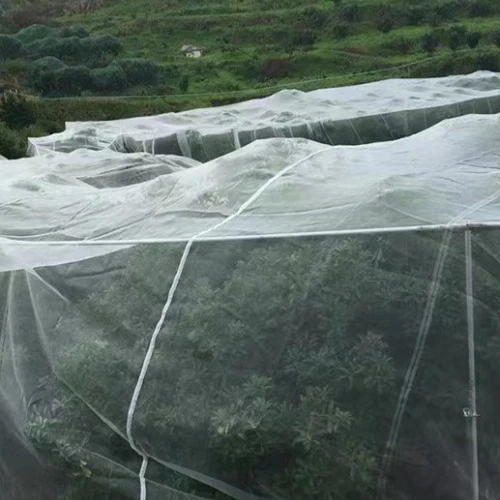-
 Afrikaans
Afrikaans -
 Albanian
Albanian -
 Amharic
Amharic -
 Arabic
Arabic -
 Armenian
Armenian -
 Azerbaijani
Azerbaijani -
 Basque
Basque -
 Belarusian
Belarusian -
 Bengali
Bengali -
 Bosnian
Bosnian -
 Bulgarian
Bulgarian -
 Catalan
Catalan -
 Cebuano
Cebuano -
 China
China -
 Corsican
Corsican -
 Croatian
Croatian -
 Czech
Czech -
 Danish
Danish -
 Dutch
Dutch -
 English
English -
 Esperanto
Esperanto -
 Estonian
Estonian -
 Finnish
Finnish -
 French
French -
 Frisian
Frisian -
 Galician
Galician -
 Georgian
Georgian -
 German
German -
 Greek
Greek -
 Gujarati
Gujarati -
 Haitian Creole
Haitian Creole -
 hausa
hausa -
 hawaiian
hawaiian -
 Hebrew
Hebrew -
 Hindi
Hindi -
 Miao
Miao -
 Hungarian
Hungarian -
 Icelandic
Icelandic -
 igbo
igbo -
 Indonesian
Indonesian -
 irish
irish -
 Italian
Italian -
 Japanese
Japanese -
 Javanese
Javanese -
 Kannada
Kannada -
 kazakh
kazakh -
 Khmer
Khmer -
 Rwandese
Rwandese -
 Korean
Korean -
 Kurdish
Kurdish -
 Kyrgyz
Kyrgyz -
 Lao
Lao -
 Latin
Latin -
 Latvian
Latvian -
 Lithuanian
Lithuanian -
 Luxembourgish
Luxembourgish -
 Macedonian
Macedonian -
 Malgashi
Malgashi -
 Malay
Malay -
 Malayalam
Malayalam -
 Maltese
Maltese -
 Maori
Maori -
 Marathi
Marathi -
 Mongolian
Mongolian -
 Myanmar
Myanmar -
 Nepali
Nepali -
 Norwegian
Norwegian -
 Norwegian
Norwegian -
 Occitan
Occitan -
 Pashto
Pashto -
 Persian
Persian -
 Polish
Polish -
 Portuguese
Portuguese -
 Punjabi
Punjabi -
 Romanian
Romanian -
 Russian
Russian -
 Samoan
Samoan -
 Scottish Gaelic
Scottish Gaelic -
 Serbian
Serbian -
 Sesotho
Sesotho -
 Shona
Shona -
 Sindhi
Sindhi -
 Sinhala
Sinhala -
 Slovak
Slovak -
 Slovenian
Slovenian -
 Somali
Somali -
 Spanish
Spanish -
 Sundanese
Sundanese -
 Swahili
Swahili -
 Swedish
Swedish -
 Tagalog
Tagalog -
 Tajik
Tajik -
 Tamil
Tamil -
 Tatar
Tatar -
 Telugu
Telugu -
 Thai
Thai -
 Turkish
Turkish -
 Turkmen
Turkmen -
 Ukrainian
Ukrainian -
 Urdu
Urdu -
 Uighur
Uighur -
 Uzbek
Uzbek -
 Vietnamese
Vietnamese -
 Welsh
Welsh -
 Bantu
Bantu -
 Yiddish
Yiddish -
 Yoruba
Yoruba -
 Zulu
Zulu
Mild Steel Wire Mesh Applications and Benefits in Various Industries
The Versatility of Mild Steel Mesh
Mild steel mesh has emerged as a crucial material in various industries due to its unique properties, affordability, and versatility. Constructed from mild steel, also known as low-carbon steel, this mesh consists of a collection of wires that are interwoven, creating a network of openings of various sizes. The manufacturing process and material characteristics contribute to its widespread use in construction, agriculture, fencing, and even artistic applications.
One of the primary advantages of mild steel mesh is its strength-to-weight ratio. Mild steel has a relatively low tensile strength compared to other steel types, making it easier to manipulate, while still offering significant load-bearing capacity. This feature makes mild steel mesh an ideal choice for applications that require durability without excessive weight. For instance, in construction, mild steel mesh is often used for reinforcing concrete slabs, enhancing the structural integrity of buildings and bridges. It helps prevent cracking by distributing loads evenly across surfaces.
Moreover, the adaptability of mild steel mesh allows it to be used in various forms and sizes to meet specific needs. The openings can range from very small to larger gaps, making it suitable for different purposes. In agricultural settings, mild steel mesh is frequently employed for fencing and protective enclosures. Whether securing livestock, protecting crops from pests, or creating compost bins, this mesh offers a reliable solution. Its flexibility allows farmers and gardeners to create customized barriers and structures tailored to their specific land layouts and requirements.
mild steel mesh

In addition to utilitarian purposes, mild steel mesh also finds its place in art and design. Artists have been known to use it in sculptures and installations, where its raw, industrial look can add depth and texture to a piece. The ability to manipulate the mesh into various shapes allows for creative expressions that challenge traditional forms. This intersection of functionality and artistry gives mild steel mesh a unique standing in both construction and creative industries.
The cost-effectiveness of mild steel mesh further enhances its appeal. Compared to stainless steel or other high-alloy materials, mild steel is significantly less expensive, making it accessible for larger projects and extensive applications. For businesses operating on tighter budgets, the use of mild steel mesh can lead to significant savings without compromising on durability or performance. Its availability in various grades and sizes ensures that most projects can be accommodated, from small DIY activities to large-scale industrial operations.
However, it is essential to note that mild steel is susceptible to corrosion when exposed to moisture and harsh environmental conditions. To mitigate this issue, many manufacturers offer protective coatings, such as galvanization or powder coating, which enhance the material's resistance to rust and extend its lifespan. These treatments make mild steel mesh suitable for outdoor applications, where exposure to the elements is inevitable.
In conclusion, mild steel mesh exemplifies a blend of strength, versatility, and cost-effectiveness. Its extensive applications in construction, agriculture, and artistic endeavors underscore its importance in modern industry. By providing a reliable, durable, and adaptable solution to various challenges, mild steel mesh continues to be an invaluable resource. As new techniques and technologies emerge, its role in both functional and creative projects is expected to expand, solidifying its place as a key material in the contemporary landscape. Whether reinforcing structures, fencing properties, or serving as a medium for artistic expression, mild steel mesh proves to be a material with immense potential and practicality.
-
Shipping Plastic Bags for Every NeedNewsJul.24,2025
-
Safety Netting: Your Shield in ConstructionNewsJul.24,2025
-
Plastic Mesh Netting for Everyday UseNewsJul.24,2025
-
Nylon Netting for Every UseNewsJul.24,2025
-
Mesh Breeder Box for Fish TanksNewsJul.24,2025
-
Expanded Steel Mesh Offers Durable VersatilityNewsJul.24,2025











